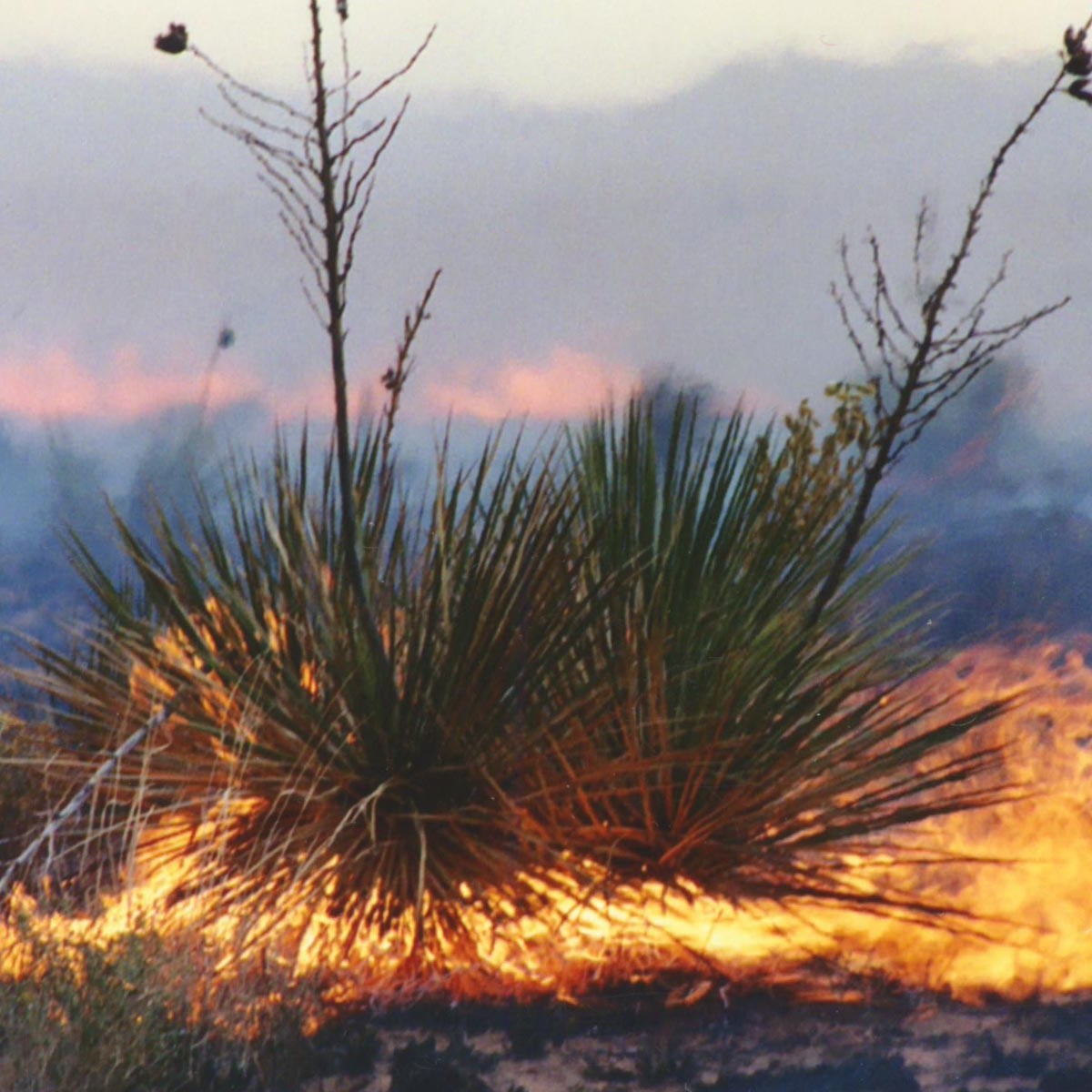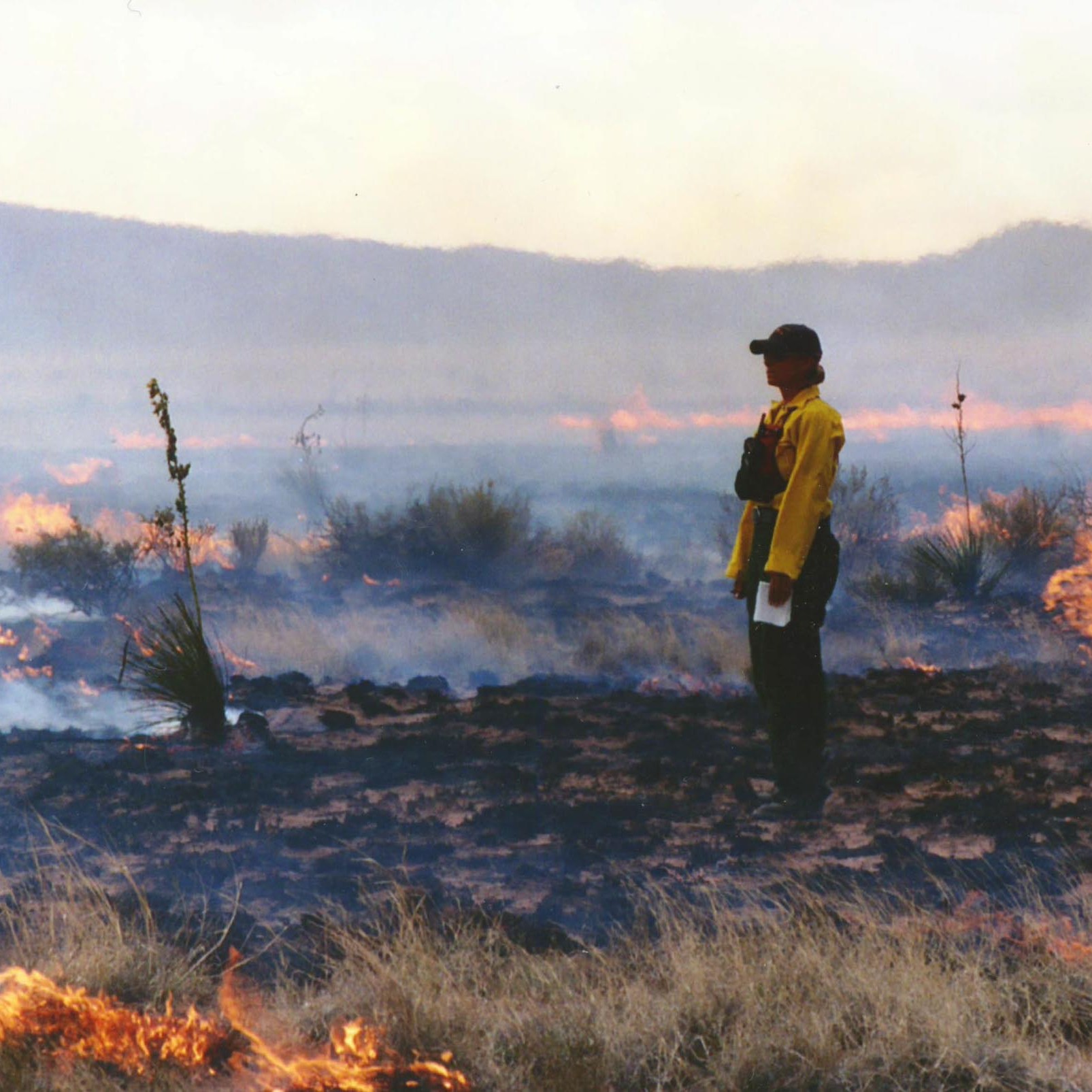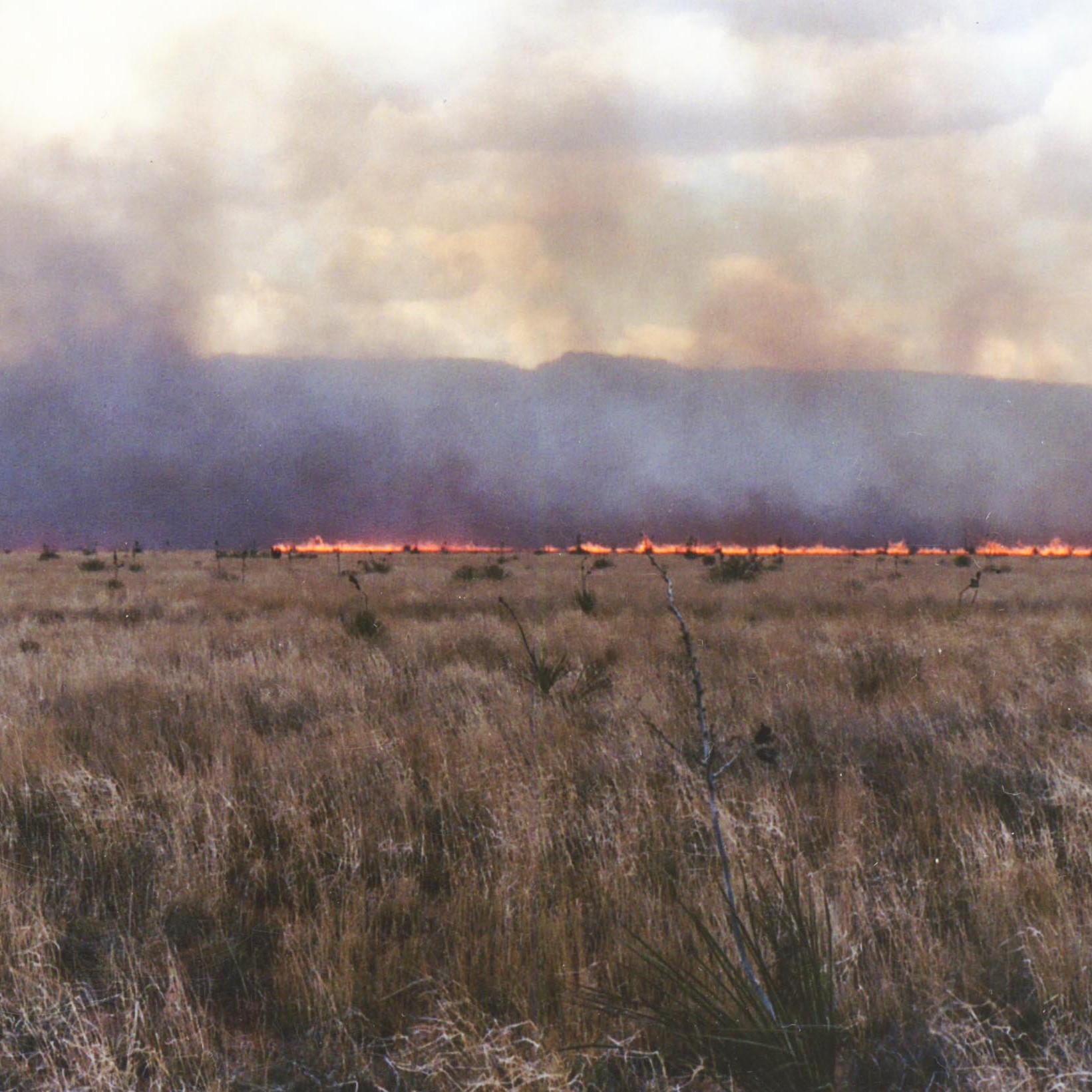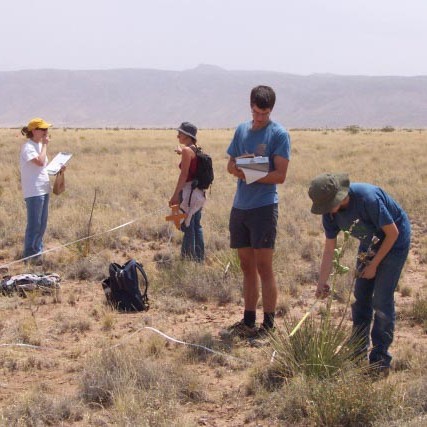Objective:
Disturbance from fire can alter the abundance and distribution of shrubs, grasses, and forbs in dryland ecosystems. In general, fire is expected to increase grass and forb production while hindering shrub encroachment in drylands. Therefore, prescribed fires are a common management tool for maintaining grassland habitats in the southwestern USA. However, black grama (Bouteloua eriopoda), a dominant species in Chihuahuan Desert grassland, can be highly susceptible to fire, potentially resulting in death followed by slow recovery rates. In contrast, blue grama (B. gracilis), the dominant of the short grass steppe and Plains grasslands may be more resistant to repeated fires. A 2003 prescribed fire in a mixed grassland of blue and black grama the Sevilleta National Wildlife Refuge in central New Mexico offered the opportunity to study the long-term effects of fire on both of the dominant species and a cohort of other grass, shrub and forb species in this region. This study was conducted on a site that had a previous prescribed burn in 1993, allowing us to incorporate previous fire history into the study design.
Novelty:
There are few long-term records of the impact of fire in semi-arid and arid, desert grasslands. Most fire studies in drylands have limited temporal scope. Accordingly, how fire is perceived and used in dryland ecosystems of the southwestern USA often relies on information derived from mesic ecosystems, such as short grass steppe, wet prairies, or even woodlands. Here, we have tracked occupancy by individual grass patches, post-fire accumulation of plant biomass, and plant species cover and diversity dynamics at decadal scales that provide insight into important disturbances in drylands. Our results inform land managers on appropriate time scales for managing fire in dryland landscapes of the desert southwest.
Design:
The BurnX study was established in a mixed black and blue grama-dominated grassland in a randomized block design consisting of 16, 9-ha blocks (300 m x 300 m) arranged in a 4×4 grid. Within each block are 12 random permanently marked subplots, of which 6 are used for the post-2003 fire measurements. Bulk biomass by year is measured in the fall by clipping two, 25 x 50 cm quadrats extending out from the subplot corner stakes in new locations in each sampling period. Occupancy by species is repeatedly measured in four, gridded 30 x 30 cm quadrats at the corner stakes of each subplot. In addition, each block contains a standard Sevilleta mammal trapping web which consists of 12 transects radiating from a central point. Each transect contains 12 numbered stakes for a total of 144 potential sample locations per web. Vegetation species composition and cover is measured in permanently located 50 cm x 50 cm quadrats at four evenly spaced points along each web transect (48 permanent quadrats per replicate) with only the first four even numbered stakes from the end of the transect used.
Responses:
Before and after the 2003 fire, above ground plant biomass accumulation and species composition were monitored from 2003 to 2018. Vegetation cover and biomass by species is estimated visually in the spring and fall each year on the web transects. Spring measurements are taken in May when spring annuals have fully matured; and fall measurements are taken in September or October when summer annuals have fully matured and perennial species have reached their peak biomass for the year before the frost. Subplot measurements of biomass and occupancy are taken only in the fall.
Discoveries. Following prescribed fire, there were fewer black grama individual grass clumps and less aboveground grass biomass and cover in burned areas than unburned plots. The recovery rate of black grama grass was slow during the 15 years following the fire. Other grasses, particularly blue grama, experienced limited to no adverse effects from fire. Similarly, impacts of fire on shrubs and forbs were limited, and overall plant species diversity was unaltered.
Supporting Documents:
2003 Prescribed Burn Effect on Chihuahuan Desert Grasses and Shrubs at the Sevilleta National Wildlife Refuge, New Mexico: Grass Recovery Study (2003-2018). https://portal.edirepository.org/nis/mapbrowse?scope=knb-lter-sev&identifier=148
Burn Exclosure Rodent Population Study at the Sevilleta National Wildlife Refuge, New Mexico (1991-1993). https://portal.edirepository.org/nis/mapbrowse?scope=knb-lter-sev&identifier=15




